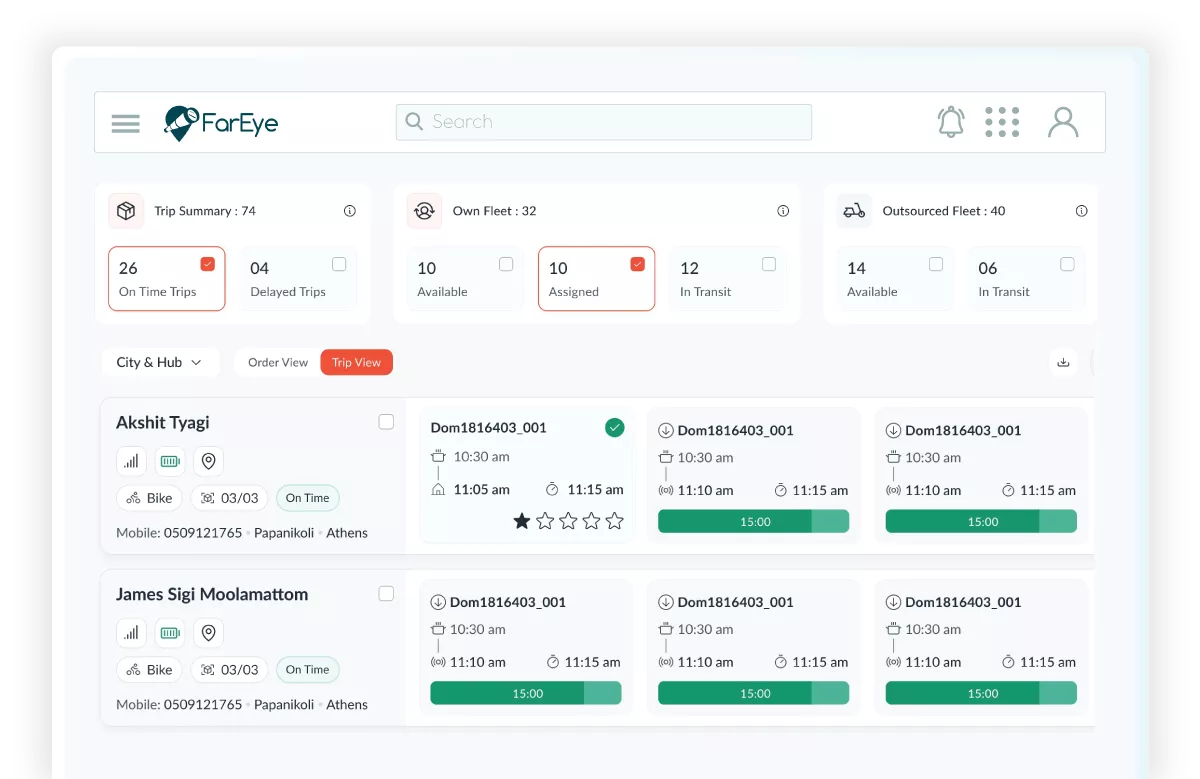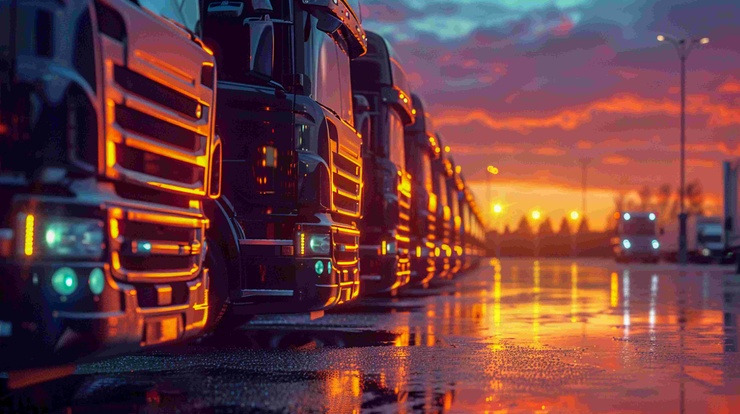- Route
Scaling Urban Deliveries with AI-Powered Grocery Delivery Software
Urban grocery delivery has shifted from a niche convenience to an everyday necessity. In the United States alone, the value of the online grocery sector is projected to exceed $659.7 billion in 2025. This remarkable growth, at a compound annual rate of 21.5%, is driven by consumer demand for same-hour or next-day service.
Today, 77% of grocery customers expect same-hour delivery and nearly 91% actively track their orders online. At the same time, over a quarter expect to be able to change delivery time or location right up to the last mile. These rising expectations have made fast, transparent and flexible delivery not just an option but the standard.
While this transformation opens new revenue streams, it also creates unique operational pressures. For the supply chain manager or dispatcher tasked with scaling in urban markets, the question isn’t whether to digitize. The real challenge is how to achieve seamless delivery orchestration in high volume, high velocity operations with maximum efficiency and minimum error.
The answer increasingly lies in artificial intelligence (AI) powered grocery delivery software and platforms that are setting new benchmarks for how enterprises manage the chaos of urban logistics.

Why Urban Grocery Delivery Needs Specialized Software
Urban grocery delivery demands agility and precision beyond traditional logistics methods. High density populations, unpredictable traffic and changing customer expectations complicate operational efficiency and route planning. Standard software solutions lack the flexibility and speed necessary to respond to real-time disruptions common in urban settings.
Specialized AI powered grocery delivery software anticipates challenges, optimizing operations rapidly to meet tight delivery windows. It ensures seamless inventory tracking, adaptive routing and proactive communication between drivers and customers.
Leveraging intelligent automation, specialized software turns urban delivery complexities into competitive advantages, enabling retailers to meet rising consumer expectations consistently.
| Manual Fulfillment | AI-Driven Fulfillment |
| Limited by human speed, prone to errors and delays. | Rapid processing, automated error prevention. |
| Traditional route planning struggles with real-time changes. | Dynamic routing adapts instantly to disruptions. |
| Poor visibility causes delays in resolving issues. | Real-time visibility enables proactive resolution. |
| Inefficient order assignment leads to wasted capacity. | Automated assignment ensures maximum utilization. |
| Difficulty managing inventory across multiple points. | Seamless inventory synchronization across nodes. |
| Reactive customer service due to a lack of predictive tools. | Predictive ETAs proactively enhance customer satisfaction. |
The New Complexity of Urban Grocery Fulfilment
For modern retailers and their logistics partners, urban grocery delivery presents four recurring challenges:
- Inventory Management at Pace
Real time insight into perishable stock is non-negotiable. A disconnect between what’s available and what’s sold leads to missed orders and customer churn. - Hyperlocal Routing, Omnichannel Demands
Urban deliveries must flex across multiple channels (app, web, phone) and fulfillment points (stores, dark stores, micro-fulfillment centers), all while meeting precise delivery windows. - Fleet and Route Complexity
Surging order volumes, dense road networks and unpredictable traffic make route planning a daily puzzle, especially when balancing owned fleets, gig drivers and third-party logistics partners. - Rising Consumer Expectations
Fast delivery, live ETAs, flexible options and seamless issue resolution are now basic requirements. Fail here and even the most loyal customers will move elsewhere. - Managing Perishables: A Race Against Time
Perishables demand precise delivery orchestration and real-time tracking through a robust visibility platform, minimizing spoilage risks from delays or incorrect handling, thus maintaining customer trust. - Handling Dry Goods: Balancing Efficiency and Scale
Efficiently managing bulk dry goods requires strategic inventory control and rigorous SLA management, especially during demand surges, ensuring accurate, timely deliveries without excessive storage costs.
Manual approaches simply cannot keep up. AI-powered grocery delivery software addresses these challenges through automation, data intelligence and continuous optimization.
How AI Powered Grocery Delivery Software Transforms Operations
AI-powered grocery delivery software introduces practical automation and real time intelligence, turning complex, high-volume delivery operations into streamlined, responsive systems that drive efficiency at every step.
Real Time, Multi Constraint Route Optimization
Traditional route planning struggles to keep pace with urban complexity, congested roads, time-limited windows and high-order densities. Online grocery software powered by AI and machine learning uses historical and real time data (traffic, weather, local events, driver skills and more) to plan and continually re-optimize routes within minutes.
- FarEye’s ML-powered engine can reduce load planning time by up to 90%, freeing dispatchers from hours of manual mapping.
- Multi-constrained planning factors in not just distance and time but vehicle type order priority, temperature needs and even preparation time for fresh goods.
Dynamic Order Batching and Dispatch Automation
Urban grocery orders fluctuate by the hour. Peak periods, flash sales or weather changes can flood dispatch with hundreds or thousands of new stops.
Online grocery shopping software with AI-based auto-assignment instantly matches every order to the most suitable driver or fleet based on capacity, proximity, SLA and even delivery mode (bike, van, on-foot).
- FarEye automates driver assignment across both owned and gig fleets, streamlining SLA management, removing manual bottlenecks and reducing order allocation time by up to 45%.
- Smart auto-sequencing reorders drop on-the-fly to adapt to late changes or missed deliveries.
Real Time Tracking and Predictive ETAs
With 91% of customers actively tracking their orders online, transparency has become essential for both dispatchers and customers alike.
FarEye’s grocery delivery software acts as an advanced visibility platform, providing end-to-end transparency and updating ETAs dynamically as routes shift due to traffic or new orders.
- Live control towers show exactly where every vehicle and order is at all times, empowering managers to intervene early if issues arise.
- Predictive algorithms anticipate delays and automatically communicate accurate ETAs to customers, reducing anxiety and inbound support calls.
Integrated Inventory and Omnichannel Fulfillment
Scaling urban delivery requires synchronizing inventory across storefronts, warehouses and micro-fulfillment centers.
AI-powered online grocery software connects directly with order management and warehouse systems, ensuring real time stock sync. Robust middleware securely syncs POS systems with fulfillment centers through protected APIs, ensuring accurate inventory updates and safeguarding sensitive customer data. This prevents out-of-stock errors and enables auto-substitution or recommendations at checkout.
- FarEye supports omni-channel fulfillment allowing orders to be picked, packed and dispatched from the most optimal node for each customer.
- This integration cuts fulfillment times and offers customers greater flexibility in choosing slots and delivery points.
Hyperlocal Flexibility with Advanced Territory and Zone Planning
City markets vary, block by block. What works in one zip code might land flat a mile away. Territory planning powered by AI dissects cities into micro-zones and optimizes workload and demand density for each driver.
FarEye’s hexagon model assigns territories based on concrete data so drivers are more balanced and clients can rely on stricter delivery times.
Territories change daily with shifting requests, for ultimate resource utilization and delivery efficiency.
Seamless Integration with Third-Party Fleets
At scale, offline grocers move from single 3PLs to hybrids of an in-house fleet paired with two or more third-party providers.
FarEye’s online grocery shopping software orchestrates private and third-party drivers and auto-selects the best carrier to complete the job based on cost, SLA and location.
This flexibility allows for the largest capacity and geographical coverage with control of the customer experience.
Rate-based routing means every shipment is optimized in terms of price and delivered service, whether you are insourcing or outsourcing.
Advanced Analytics and Data-Driven Performance
With high delivery volumes, minor inefficiencies can quickly multiply. AI-powered analytics track everything: service times, on-time performance, route efficiency, driver productivity and cost per drop.
- FarEye’s dashboards deliver actionable insights, helping managers pinpoint bottlenecks, improve training and forecast future capacity needs.
- Automated reporting ensures every stakeholder, from dispatch to finance, can monitor KPIs in real time.
FarEye: Scaling for the Urban Grocers
Based on the specific requirements of high-speed urban grocery delivery, FarEye’s routing offering is custom designed. Leveraging cutting-edge machine learning and real time optimization capabilities, FarEye guarantees:
- Reduced route planning time by 90%
- Save up to 46% on last mile delivery costs
- Vehicle utilization increased up to 30%
- Higher SLA adherence and customer satisfaction
Through automating and orchestrating all stages of the delivery lifecycle, FarEye’s grocery delivery software makes a logistical nightmare into a competitive advantage. Retailers have the capability to surpass customer expectations, expand into new markets and generate new revenue streams all with lean, agile operations.
Mapping the Future of Urban Grocery Shopping
Speedier, brainier, deeper the urban grocery delivery space is only going to get faster and smarter. Companies that rely on manual tools and processes will soon become marginalized by the new era of speed, agility and visibility required by the modern customer.
The solution is AI-fueled grocery delivery software that marries automation, data and seamless integrations in a way that makes scaling a reality while being scalable itself both in terms of possibility and profitability.
Powered by FarEye, businesses will be able to take on urban grocery delivery at scale today and the uncertain demand associated with online grocery in the future.
Source:

Komal Puri is a seasoned professional in the logistics and supply chain industry. As the AVP of Marketing and a subject matter expert at FarEye, she has been instrumental in shaping the industry narrative for the past decade. Her expertise and insights have earned her numerous awards and recognition. Komal’s writings reflect her deep understanding of the industry, offering valuable insights and thought leadership.
Let's Talk to Our Experts and Optimize Your Deliveries Today!
An expert from our team will reach out within 24 hours
Related resources



